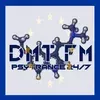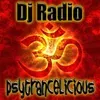Goa Live Radio Stations
Radio Stations
Choose a Genre
The Sound of Goa: A Journey Through the Origins and Evolution of Goa Trance
Emerging from the vibrant beaches and psychedelic culture of India’s coastal paradise, Goa music has evolved into one of the most influential genres in the world of electronic dance music (EDM). Originally born in the Indian state of Goa in the 1960s and 1970s, the genre is characterized by its unique blend of Western psychedelic rock and traditional Indian music, creating a captivating sound that draws listeners into a trance-like state. The fusion of rhythmic beats, hypnotic melodies, and spiritual undertones has made Goa a powerful force in the global music scene.
The Origins of Goa Music
Goa music traces its roots back to the vibrant counterculture of the 1960s and 1970s, when Western backpackers, hippies, and spiritual seekers flocked to the beaches of Goa. These travelers brought with them an eclectic mix of psychedelic rock and electronic music, which began to blend with the rich and ancient sounds of Indian classical music. The outcome was an early form of electronic music that was not only innovative but also reflective of the cultural melting pot of Goa. The sound captured the freedom, mysticism, and exploration of the era, which became the foundation for Goa trance music.
As the 1980s rolled in, Goa’s popularity as a destination for raves and outdoor parties further fueled the development of Goa trance. By the 1990s, the genre had fully formed, combining elements of psychedelic rock with driving electronic rhythms and expansive, trance-inducing melodies. Goa trance was soon played at rave parties, festivals, and underground events, not just in Goa, but across the globe.
The Characteristics of Goa Trance
Goa music’s unique sound is rooted in several key characteristics that define the genre today:
Trance-Inducing Rhythms: A hallmark of Goa trance is its repetitive, driving beat. These rhythms are crafted to keep listeners in a state of musical immersion, making the genre ideal for long dance sessions at raves or festivals. The beats are designed to create a sense of unity and rhythm, encouraging a trance-like experience for the listener.
Hypnotic Melodies and Synthesized Sounds: Goa music utilizes complex, layered synthesized melodies that build and evolve throughout a track. The melodies are often ethereal, airy, and otherworldly, drawing inspiration from Eastern sounds and spiritual motifs. The use of synthesizers creates deep, pulsating basslines and atmospheric effects that complement the music’s trance-inducing nature.
Spirituality and Mysticism: One of the defining aspects of Goa trance is its spiritual dimension. Many Goa tracks incorporate references to Eastern philosophy, yoga, meditation, and mysticism. Lyrics, though often minimal or abstract, can evoke feelings of self-discovery and spiritual exploration. The music is not just about the physical act of dancing, but also about a deeper journey into the self and the universe.
Otherworldly Vocal Samples: The genre often incorporates vocal samples that add to its ethereal quality. These samples are usually mystical, spiritual, or cryptic in nature, enhancing the genre's transcendent and otherworldly appeal. They can range from chanting and mantras to psychedelic spoken word that evokes a sense of cosmic connection.
Goa Trance and Party Culture
While Goa music has strong spiritual roots, it has also become deeply intertwined with hedonistic party culture. In the 1980s and 1990s, Goa became a hub for electronic music lovers, attracting thousands of revelers to its beaches for all-night raves and outdoor parties. These gatherings were known for their intense energy, vibrant light shows, and visuals that complemented the music’s mind-bending soundscapes. The fusion of music and sensory experiences created an immersive environment, where the music wasn’t just something to listen to—it was an all-encompassing experience.
This hedonistic aspect of Goa music is part of what has made it so appealing to fans worldwide. Goa trance is often associated with a sense of freedom, euphoria, and community, where listeners can escape from the constraints of daily life and immerse themselves in a world of sound, light, and connection.
The Resurgence of Goa Music
Despite its roots in the underground rave scene of the '90s, Goa music has recently experienced a resurgence. Modern-day producers and artists are revisiting the genre, taking the classic Goa trance sound and blending it with newer electronic styles to create a fresh take on the genre. This evolution of Goa music has resulted in a new wave of interest among younger listeners who may not have been around when the genre first emerged but are drawn to its unique sound and history.
Radio stations dedicated to Goa music play a vital role in keeping this genre alive. These stations typically feature a mix of classic Goa trance tracks from the '90s and early 2000s, alongside newer productions that are inspired by the genre's original sound. Through these stations, listeners can connect with the roots of Goa trance, as well as explore the modern iterations of the genre. Goa trance continues to evolve, and its timeless appeal remains as strong as ever.
Goa Music on the Airwaves
For fans of Goa trance, radio stations specializing in Goa music provide an invaluable resource for discovering new tracks, revisiting old favorites, and connecting with the global Goa community. These stations often offer a blend of classic Goa trance and psychedelic progressive tunes that stay true to the spirit of the genre while pushing it forward. Whether you're looking to relive the golden era of Goa music or explore its evolving sound, these stations offer the perfect soundtrack for any listener.
Conclusion: The Timeless Spirit of Goa Music
From its humble beginnings on the beaches of Goa to its current status as a globally recognized genre of electronic music, Goa has left an indelible mark on the music world. Its distinctive blend of psychedelic beats, spiritual influences, and immersive rhythms makes it a genre unlike any other. Goa trance isn’t just music—it’s an experience, a journey into the self, and a celebration of the timeless fusion of Eastern mysticism and Western electronic music.
Whether you're a long-time fan or a newcomer to the genre, Goa music offers a rich, transformative listening experience. Tune in to a Goa music station and let the hypnotic rhythms transport you to the heart of Goa’s legendary soundscape.
Emerging from the vibrant beaches and psychedelic culture of India’s coastal paradise, Goa music has evolved into one of the most influential genres in the world of electronic dance music (EDM). Originally born in the Indian state of Goa in the 1960s and 1970s, the genre is characterized by its unique blend of Western psychedelic rock and traditional Indian music, creating a captivating sound that draws listeners into a trance-like state. The fusion of rhythmic beats, hypnotic melodies, and spiritual undertones has made Goa a powerful force in the global music scene.
The Origins of Goa Music
Goa music traces its roots back to the vibrant counterculture of the 1960s and 1970s, when Western backpackers, hippies, and spiritual seekers flocked to the beaches of Goa. These travelers brought with them an eclectic mix of psychedelic rock and electronic music, which began to blend with the rich and ancient sounds of Indian classical music. The outcome was an early form of electronic music that was not only innovative but also reflective of the cultural melting pot of Goa. The sound captured the freedom, mysticism, and exploration of the era, which became the foundation for Goa trance music.
As the 1980s rolled in, Goa’s popularity as a destination for raves and outdoor parties further fueled the development of Goa trance. By the 1990s, the genre had fully formed, combining elements of psychedelic rock with driving electronic rhythms and expansive, trance-inducing melodies. Goa trance was soon played at rave parties, festivals, and underground events, not just in Goa, but across the globe.
The Characteristics of Goa Trance
Goa music’s unique sound is rooted in several key characteristics that define the genre today:
Trance-Inducing Rhythms: A hallmark of Goa trance is its repetitive, driving beat. These rhythms are crafted to keep listeners in a state of musical immersion, making the genre ideal for long dance sessions at raves or festivals. The beats are designed to create a sense of unity and rhythm, encouraging a trance-like experience for the listener.
Hypnotic Melodies and Synthesized Sounds: Goa music utilizes complex, layered synthesized melodies that build and evolve throughout a track. The melodies are often ethereal, airy, and otherworldly, drawing inspiration from Eastern sounds and spiritual motifs. The use of synthesizers creates deep, pulsating basslines and atmospheric effects that complement the music’s trance-inducing nature.
Spirituality and Mysticism: One of the defining aspects of Goa trance is its spiritual dimension. Many Goa tracks incorporate references to Eastern philosophy, yoga, meditation, and mysticism. Lyrics, though often minimal or abstract, can evoke feelings of self-discovery and spiritual exploration. The music is not just about the physical act of dancing, but also about a deeper journey into the self and the universe.
Otherworldly Vocal Samples: The genre often incorporates vocal samples that add to its ethereal quality. These samples are usually mystical, spiritual, or cryptic in nature, enhancing the genre's transcendent and otherworldly appeal. They can range from chanting and mantras to psychedelic spoken word that evokes a sense of cosmic connection.
Goa Trance and Party Culture
While Goa music has strong spiritual roots, it has also become deeply intertwined with hedonistic party culture. In the 1980s and 1990s, Goa became a hub for electronic music lovers, attracting thousands of revelers to its beaches for all-night raves and outdoor parties. These gatherings were known for their intense energy, vibrant light shows, and visuals that complemented the music’s mind-bending soundscapes. The fusion of music and sensory experiences created an immersive environment, where the music wasn’t just something to listen to—it was an all-encompassing experience.
This hedonistic aspect of Goa music is part of what has made it so appealing to fans worldwide. Goa trance is often associated with a sense of freedom, euphoria, and community, where listeners can escape from the constraints of daily life and immerse themselves in a world of sound, light, and connection.
The Resurgence of Goa Music
Despite its roots in the underground rave scene of the '90s, Goa music has recently experienced a resurgence. Modern-day producers and artists are revisiting the genre, taking the classic Goa trance sound and blending it with newer electronic styles to create a fresh take on the genre. This evolution of Goa music has resulted in a new wave of interest among younger listeners who may not have been around when the genre first emerged but are drawn to its unique sound and history.
Radio stations dedicated to Goa music play a vital role in keeping this genre alive. These stations typically feature a mix of classic Goa trance tracks from the '90s and early 2000s, alongside newer productions that are inspired by the genre's original sound. Through these stations, listeners can connect with the roots of Goa trance, as well as explore the modern iterations of the genre. Goa trance continues to evolve, and its timeless appeal remains as strong as ever.
Goa Music on the Airwaves
For fans of Goa trance, radio stations specializing in Goa music provide an invaluable resource for discovering new tracks, revisiting old favorites, and connecting with the global Goa community. These stations often offer a blend of classic Goa trance and psychedelic progressive tunes that stay true to the spirit of the genre while pushing it forward. Whether you're looking to relive the golden era of Goa music or explore its evolving sound, these stations offer the perfect soundtrack for any listener.
Conclusion: The Timeless Spirit of Goa Music
From its humble beginnings on the beaches of Goa to its current status as a globally recognized genre of electronic music, Goa has left an indelible mark on the music world. Its distinctive blend of psychedelic beats, spiritual influences, and immersive rhythms makes it a genre unlike any other. Goa trance isn’t just music—it’s an experience, a journey into the self, and a celebration of the timeless fusion of Eastern mysticism and Western electronic music.
Whether you're a long-time fan or a newcomer to the genre, Goa music offers a rich, transformative listening experience. Tune in to a Goa music station and let the hypnotic rhythms transport you to the heart of Goa’s legendary soundscape.






